Reviews
Tom Savini
USA, 1990
Credits
Review by Victoria Large
Posted on 16 October 2011
Source Sony DVD
Categories 31 Days of Horror VIII
As a horror fan, I frequently greet the announcement of yet another genre remake with glum skepticism, and I know I’m not alone. When it comes to remakes of classics, fans of the original films are often moved to feeling bitterly protective: there was nothing wrong with these pictures the first time, we insist, and there’s no duplicating the unique set of circumstances that they sprang from. We sigh heavily at having to explain that The Wicker Man was a remarkably chilling British film before Nicolas Cage had even left school, roll our eyes when we mention Psycho and then have to answer the inevitable question: “Which one?” But if I’m honest, I will have to admit that the hostility routinely leveled at remakes is not always particularly fair.
Yes, it’s distressing to see the title of a work that we love snatched up by some new film that we may not even like, and yes, remakes sometimes seem like malign impostors, identity thieves bearing sinister agendas. But if I reach for an Invasion of the Body Snatchers metaphor here, cracks in the argument against remakes will start to show, because the 1978 remake of that 1956 classic is really quite good. And thinking about how good that film is might lead me to think about John Carpenter’s The Thing and David Cronenberg’s The Fly—horror remakes that have become classics in their own right. The truth is that the horror genre is rife with retellings, and always has been. This is a genre of official and unofficial remakes, sequels, spoofs, homages, and twists on long-standing mythologies: vampires, witches, werewolves, zombies. And what’s more, the original films are usually not in as much danger as we’re inclined to believe. Oftentimes a film’s popularity and legacy has already been cemented, and it’s being remade for that very reason. The remakes then become the underdogs: disreputable undertakings even among fans of a proudly disreputable genre. This is not to say that all remakes are necessary or even desirable, just that we may be missing something pretty cool if we approach them with an unthinkingly dismissive attitude.
All of this brings me to the 1990 remake of George A. Romero’s Night of the Living Dead. To call Romero’s film a classic would perhaps be an understatement: for forty-plus years now, it’s been one of horror’s genuine urtexts, a film of extraordinary influence and cultural resonance. So of course it would be unnecessary to state to obvious: that the remake of Night of the Living Dead, which marked the directorial debut of special makeup effects master Tom Savini, is not and could never be a film of the same significance as its predecessor. It is, however, a better and more interesting film than its critics might have you believe, certainly more than just a bigger budgeted attempt to load the old story up with some post-slasher era splatter effects and bring in some extra cash in the process.
On many counts, Savini is appropriately reverent toward his source material, working to recreate the desperate, claustrophobic atmosphere of the original. His visuals have a punchy timelessness and simplicity that serve the film well: in crisp, almost comic book-like frames, we see the house sitting in the middle of nowhere, the frightened characters in close-up, the ominous pools of blood and the creatures shambling in from the shadows. The screenplay, written by Romero, self-consciously calls back to the 1968 version in several key places, including reprises of famous lines like, “They’re coming to get you Barbara!” and my personal favorite, “Yeah, they’re dead. They’re all messed up.”
Yet while these moments may evoke a smile of recognition for Romero fans, one of the film’s main virtues is its willingness to make some smart revisions to its familiar story. Savini uses the cemetery scene that opens the film as a chance to teasingly fake out fans of the original and add some particularly horrifying new touches, including the clumsy approach of a recently autopsied living corpse. He later revises Romero’s devastating final scenes with successfully haunting results.
Best of all, Savini’s film reimagines Barbara, the lead female character who spent the bulk of Romero’s 1968 film in a helpless state of catatonic shock. Barbara starts the 1990 version in much the same way, understandably scared out of her mind after seeing someone brained by a zombie right before her eyes. But there’s a difference this time. Future Candyman star Tony Todd, stepping into Duane Jones’ iconic role as our male protagonist Ben, tells Patricia Tallman’s new Barbara: “I know you can fight if you have to.” And so she does. Slipping out of her demure skirt and pink sweater in favor of pants and a plain tank top, Barbara takes arms against the encroaching zombie masses. Any resemblance to Alien’s Ripley is entirely intentional—and welcome.
Tallman’s Barbara grows into a refreshingly active character possessed of both empathy and strength: the sight of the mindless, once-human monsters that populate the film may bring her to tears, but that doesn’t keep her from pragmatically pulling the trigger. That she eventually develops into a character of notable and troubling moral ambiguity keeps things interesting, giving Tallman more to play and the audience more to chew on. No fair spoiling it, but by the time she regards a group of living people torturing zombies for sport and delivers one of the remakes' much-discussed lines, “They’re us. We’re them and they’re us,” Barbara is by no means an innocent.
Indeed, while there is potential for a myriad of subtextual readings of who and what the zombies are meant to be in this version of Night of the Living Dead, just as there remain a wide range of viable readings of Romero’s original (In a DVD interview segment, Savini draws a parallel between the terror caused by the zombie contagion in his film and the real-life fears that accompanied the early days of the AIDS epidemic in America.), both films share the broad and unsettling notion that the realization of our greatest fears may well have a human face, quite possibly our own. In this regard, Savini’s remake remains true to Romero’s themes without merely co-opting them. Rather, his film explores the original’s premise further, proving that some wells are deep enough to warrant revisiting.
More 31 Days of Horror VIII
-

Westworld
1973 -
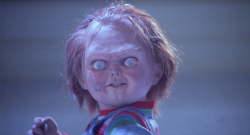
Child’s Play
1988 -
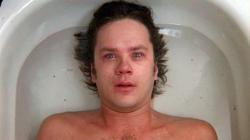
Jacob’s Ladder
1990 -

Willy Wonka and the Chocolate Factory
1971 -
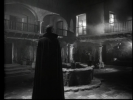
El Vampiro
1957 -
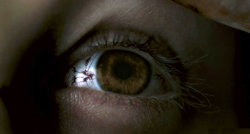
28 Weeks Later
2007 -

Piranha II: The Spawning
1981 -
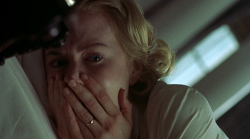
The Others
2001 -
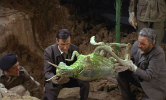
Quatermass and the Pit
1967 -

I Know Who Killed Me
2007 -
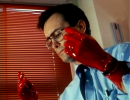
Bride of Re-Animator
1990 -

Alucarda
1978 -
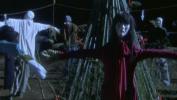
Kakashi
2001 -

Seizure
1974 -
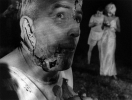
Night of the Living Dead
1968 -

Night of the Living Dead
1990 -
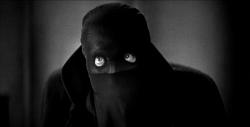
The Bat Whispers
1930 -

Miracle Mile
1988 -

Tintorera
1977 -

Paradise Lost
1996 -

The Cars that Ate Paris
1974 -

Ginger Snaps
2000 -
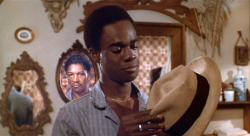
J.D.’s Revenge
1976 -
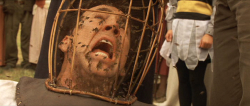
The Wicker Man
2006 -

Black Water
2007 -

Don’t Panic
1988 -
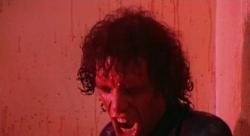
The Driller Killer
1979 -

Targets
1968 -

Mahal
1949 -
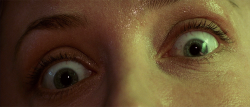
Event Horizon
1997
We don’t do comments anymore, but you may contact us here or find us on Twitter or Facebook.



